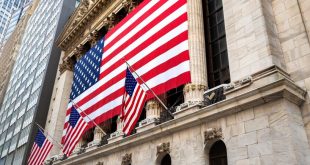The yen fell on Friday as the Bank of Japan stuck to its accommodative policy. At the same time, the dollar attempted to recover from losses at the weekend on expectations that the Federal Reserve would signal a slowdown in interest rate hikes.
The dollar was last up 0.8 percent against the yen at 147.43 after the Bank of Japan kept short-term interest rates unchanged at 0.1 percent and pledged to keep the 10-year bond yield at zero percent, as expected.
“We are not planning to raise interest rates or go out (of easing) anytime soon,” said Haruhiko Kuroda, Governor of the Bank of Japan.
He added that policies would change if Japan’s inflation rate approached 2%, but this would be announced to the markets clearly.
The dollar also rose against the pound, which fell 0.4 percent to 1.1516 against the dollar, and against the euro, which fell 0.2 percent to 0.9941 against the dollar, as investors exercised a little caution.
The single currency is trying to recover after falling 1% the previous day after the European Central Bank raised interest rates by 75 basis points.
ECB
The European Central Bank (ECB) announced on Thursday that it raised its key rates by 75 basis points (bps) following the October policy meeting, as expected.
With this decision, the interest rate on the main refinancing operations and the interest rates on the marginal lending facility and the deposit facility will be increased to 2%, 2.25% and 1.5%, respectively.
“The Governing Council intends to continue reinvesting, in full, the principal payments from maturing securities purchased under the app for an extended period of time past the date when it started raising the key ecb interest rates.”
“In any case, the Governing Council will regularly assess how targeted lending operations are contributing to its monetary policy stance.” said Lagarde.
Europe
European shares closed higher on Friday as upbeat signals from Wall Street helped offset early losses from weak commodity prices and mixed corporate results reports.
After falling as much as 1.1 percent earlier, the pan-European Stoxx 600 index rose as the session drew to a close, closing 0.1 percent higher, at its highest level in five weeks.
Wall Street indices received a boost from Apple shares, which revealed better-than-expected results.
The Stoxx 600 index closed little changed on Thursday after the European Central Bank raised interest rates as expected but said it had already made “substantial” progress in trying to stem the historic rise in inflation.
The German index rose 0.2%, while the French index rose 0.5%.
Despite the economic concerns, the Stoxx 600 index recorded its best weekly performance in seven months, rising 3.7 percent, after sentiment was boosted by expectations of a slower pace of interest rate hikes and better-than-expected earnings reports.
OMV shares jumped 9.3 percent, topping the list of gainers on the index, after the Austrian energy group nearly doubled its core quarterly profit, driven by higher oil and gas prices.
Air France KLM shares fell 13.1 percent after the company cut its forecast for its winter capacity.
Among the major sectors, mining companies took a sharp hit as commodity prices fell amid concerns about China’s expansion of COVID-19-related restrictions.
Gold
Gold fell more than 1 percent on Friday as the dollar and bond yields rose after data showed inflation pressures remained high, boosting expectations of another big interest rate hike at the US Federal Reserve meeting next week.
And the price of gold in spot transactions fell 1.3 percent to $ 1641.30 an ounce by 1743 GMT. And US gold futures fell 1.3 percent to settle at $1644.8.
The Commerce Department said consumer spending, which accounts for more than two-thirds of US economic activity, rose 0.6 percent last month.
The dollar rose 0.3 percent against its rivals after the release of US economic data, which made gold more expensive for holders of other currencies. US Treasury yields also rose.
The Federal Reserve is widely expected to raise the benchmark interest rate by 75 basis points at the November 1st and 2nd Monetary Policy Committee meeting. Traders are also expecting another 50 basis point increase in December.
Gold is highly sensitive to rising US interest rates, as this leads to an increase in the opportunity cost of holding bullion that does not yield a return, in addition to the effect of strengthening the dollar.
As for other precious metals, silver fell in spot transactions 2.1 percent to $ 19.17 an ounce.
Platinum fell 1.8 percent to $942.13. And palladium fell 2.4 percent to $ 1895.46.
Wall Street
A strong and widespread rally pushed Wall Street to close sharply higher on Friday, as encouraging economic data and expectations of healthy earnings boosted investors’ appetite for risk ahead of next week’s two-day Federal Reserve monetary policy meeting.
All major US indexes ended the session more than 2 percent higher, with the Standard & Poor’s and Nasdaq indexes posting gains for the second week in a row.
The Dow Jones Industrial Average rose for the fourth consecutive week and the largest weekly percentage gain since May.
According to preliminary data, Standard & Poor’s rose 94.08 points, or 2.47%, to close at 3,901.38 points. The Nasdaq Composite rose 307.93 points, or 2.87 percent, to 11,102.34. The Dow Jones Industrial Average rose 824.54 points, or 2.57 percent, to 3,2857.82 points.
Earnings
Amazon.com reported on Thursday third-quarter earnings that beat analysts’ forecasts and revenue that fell short of expectations.
Amazon.com announced earnings per share of $0.28 on revenue of $127.10.
Amazon.com shares are down 33% from the beginning of the year, still down 41.01% from its 52 week high of $188.11 set on November 19, 2021.
Amazon.com shares lost 17.22% in after-hours trade following the report.
Apple reported on Thursday fourth-quarter earnings that beat analysts’ forecasts and revenue that topped expectations.
Apple announced earnings per share of $1.29 on revenue of $90.10.
Apple shares are down 18% from the beginning of the year, still down 20.85% from its 52 week high of $182.94 set on January 4.
Mastercard reported third-quarter EPS of $2.68, $0.11 better than the analyst estimate of $2.57. Revenue for the quarter came in at $5.80 versus the consensus estimate of $5.65B.
Mastercard’s stock price closed at $319.51. It is down -9.69% in the last 3 months and down -4.26% in the last 12 months.
Chevron reported on Friday third-quarter earnings that beat analysts’ forecasts and revenue that topped expectations.
Chevron announced earnings per share of $5.66 on revenue of $66.64.
Caterpillar reported on Thursday third quarter earnings that beat analysts’ forecasts and revenue that topped expectations.
Caterpillar announced earnings per share of $3.95 on revenue of $15.00.
On Thursday, Xcel Energy’s third-quarter earnings missed analysts’ forecasts and revenue that topped expectations.
Xcel Energy announced earnings per share of $1.18 on revenue of $4.08.
Oil
Oil prices fell on Monday after concerns that the expansion of COVID-19 restrictions in China would reduce demand overshadowed indications that production in the largest shale oil field in the United States is losing steam.
Brent crude futures fell 36 cents, or 0.4 percent, to $95.41 a barrel by 0151 GMT, after falling 1.2 percent on Friday.
The price of US West, Texas Intermediate crude, fell 23 cents, or 0.3 percent, to $ 87.67 a barrel, after falling 1.3 percent at the close on Friday.
Stephen Innes of SBI Asset Management said that the expansion of Covid-19 restrictions in China has always raised concerns about demand from the world’s largest importer of crude.
Chinese cities have begun to tighten Beijing’s zero-Covid-19 policy as the outbreak expands, thwarting earlier hopes of a demand revival.
WTI is still supported by signs from major US producers that the productivity of the Permian field, the largest shale oil field in America, is slowing.
 Noor Trends News, Technical Analysis, Educational Tools and Recommendations
Noor Trends News, Technical Analysis, Educational Tools and Recommendations





